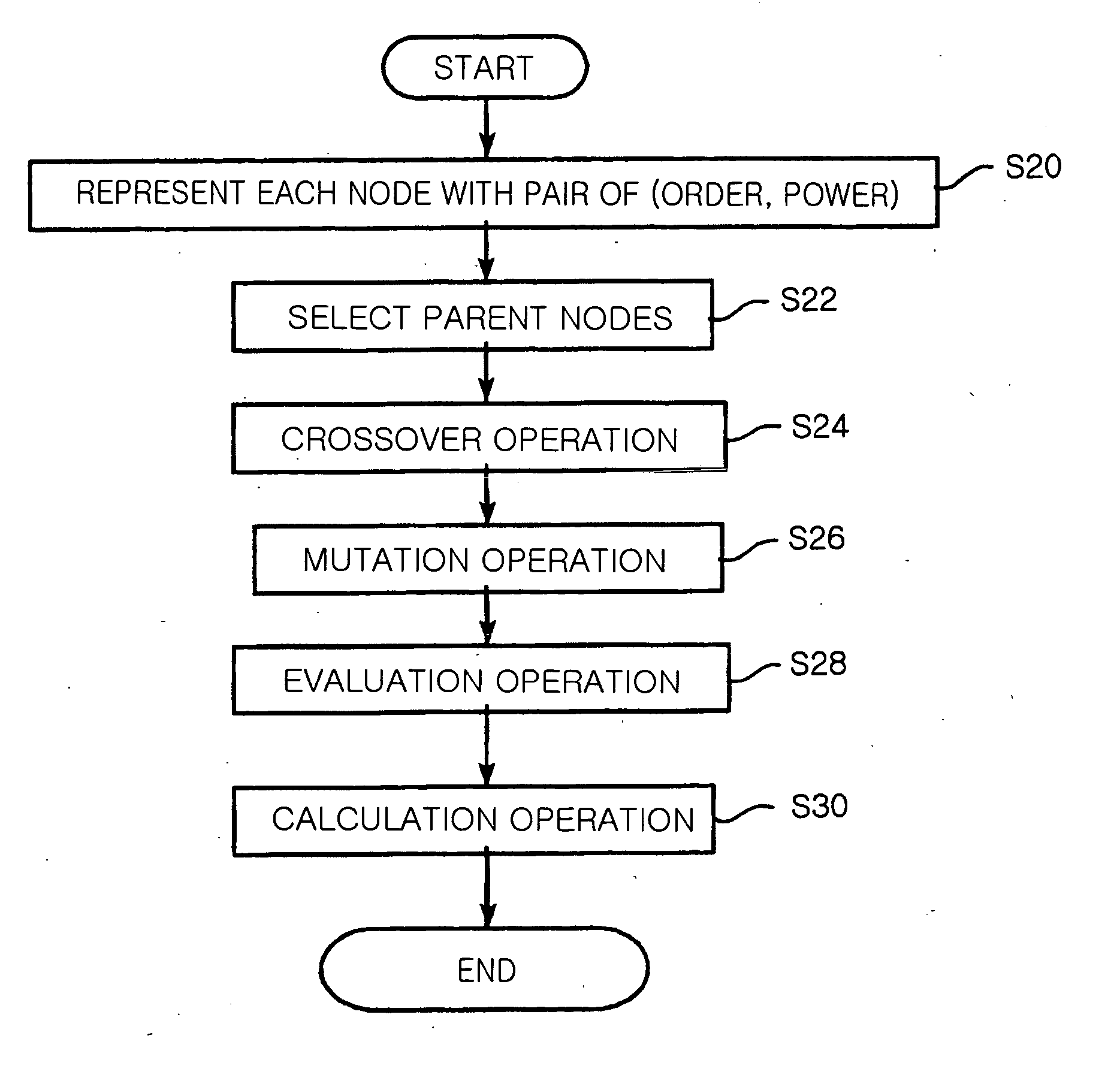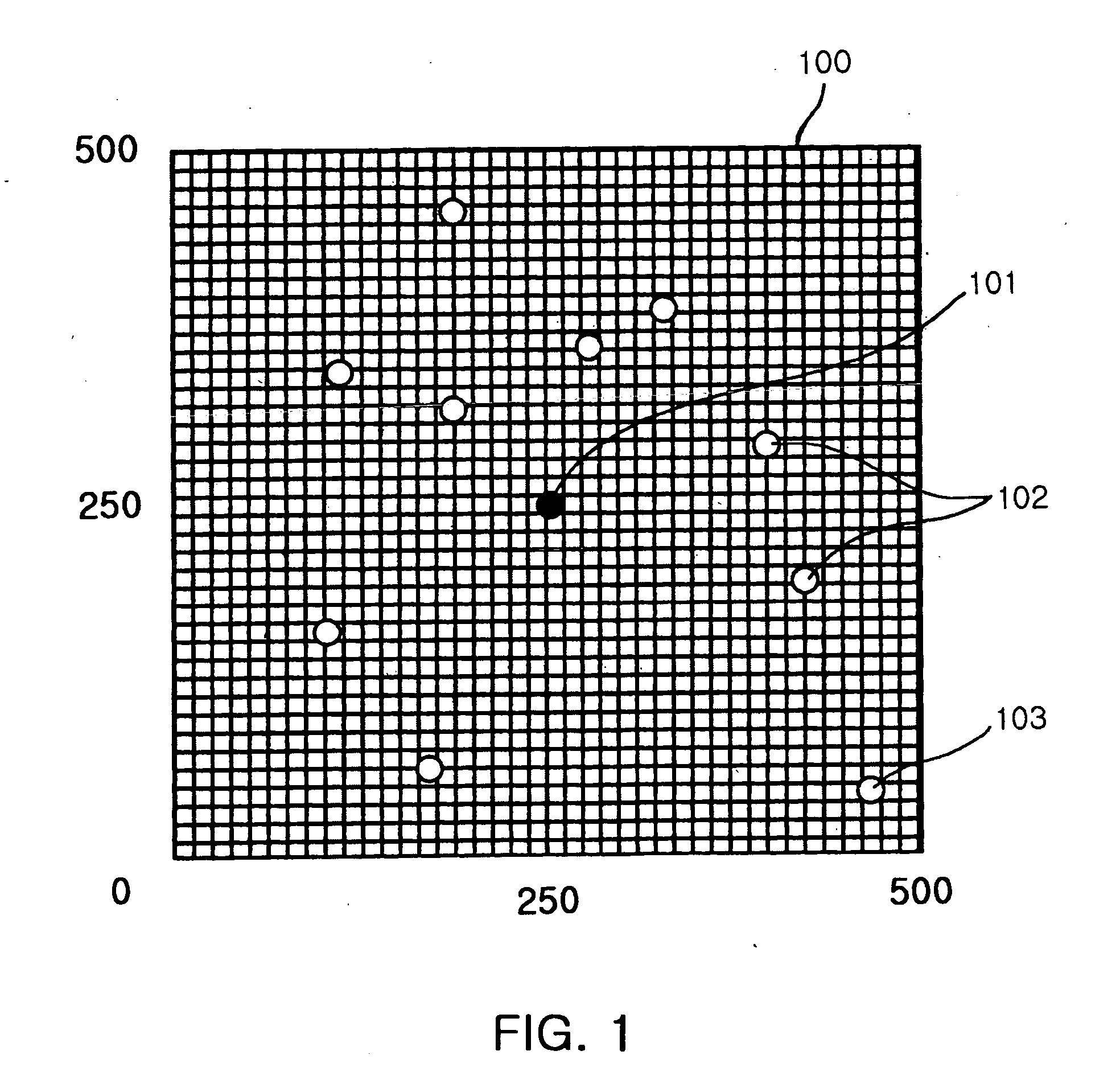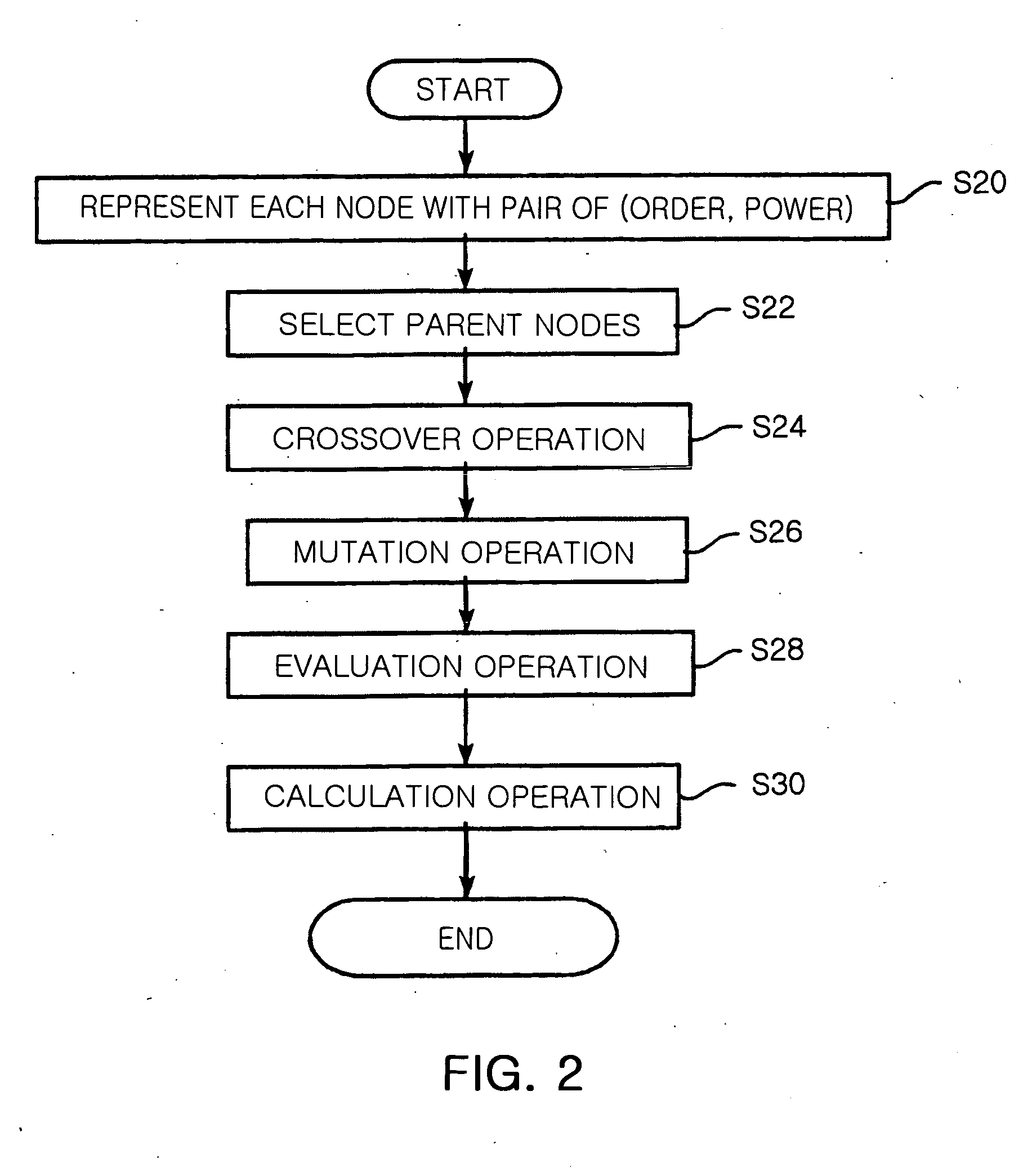Method for selecting broadcast routing path using genetic algorithm in Ad-hoc network
a genetic algorithm and ad-hoc network technology, applied in the field of broadcast routing method in an ad-hoc network, can solve the problems of not teaching a broadcast routing method for and achieving the effect of maximising network resources during data transmission and minimizing the number of relay nodes and total power consumption
- Summary
- Abstract
- Description
- Claims
- Application Information
AI Technical Summary
Benefits of technology
Problems solved by technology
Method used
Image
Examples
Embodiment Construction
[0030] The present invention will now be described more fully hereinafter with reference to the accompanying drawings, in which preferred embodiments of the invention are shown.
[0031]FIG. 1 illustrates a configuration of an Ad-hoc network according to an embodiment of the present invention. Referring to FIG. 1, the Ad-hoc network 100 includes a plurality of nodes 101 to 103. The nodes may be a source node, a relay node, or a destination node. The Ad-hoc network illustrated in FIG. 1 includes one source node 101, a plurality of relay nodes 102, and a plurality of destination nodes 103. Although not shown in FIG. 1, the Ad-hoc network may further include at least one gateway for transmitting data from the nodes to other communication system (e.g., Internet network).
[0032] The source node 101 transmits data to the neighbor relay node 102, and the relay node 102 transmits the data to another relay node 102. Through these procedures, the data is finally transmitted to the destination n...
PUM
 Login to View More
Login to View More Abstract
Description
Claims
Application Information
 Login to View More
Login to View More - R&D
- Intellectual Property
- Life Sciences
- Materials
- Tech Scout
- Unparalleled Data Quality
- Higher Quality Content
- 60% Fewer Hallucinations
Browse by: Latest US Patents, China's latest patents, Technical Efficacy Thesaurus, Application Domain, Technology Topic, Popular Technical Reports.
© 2025 PatSnap. All rights reserved.Legal|Privacy policy|Modern Slavery Act Transparency Statement|Sitemap|About US| Contact US: help@patsnap.com



